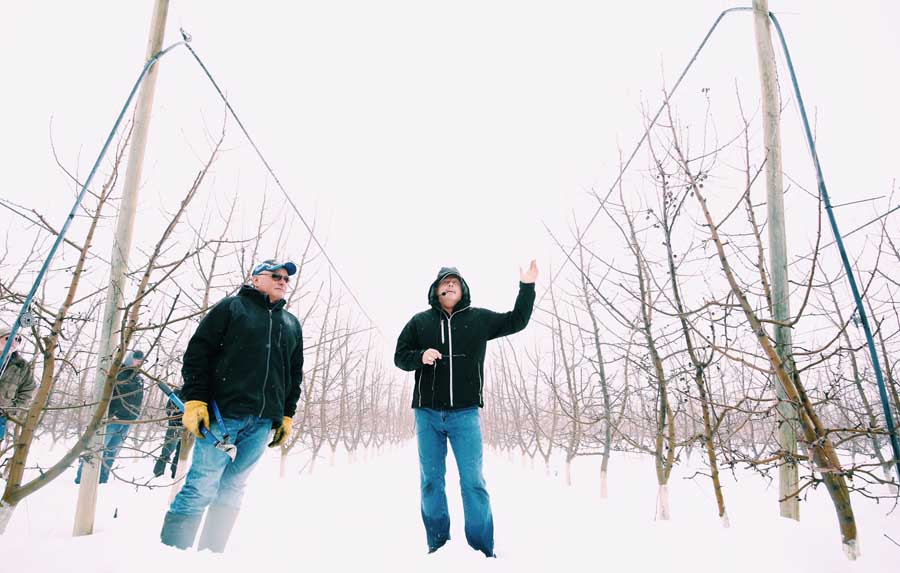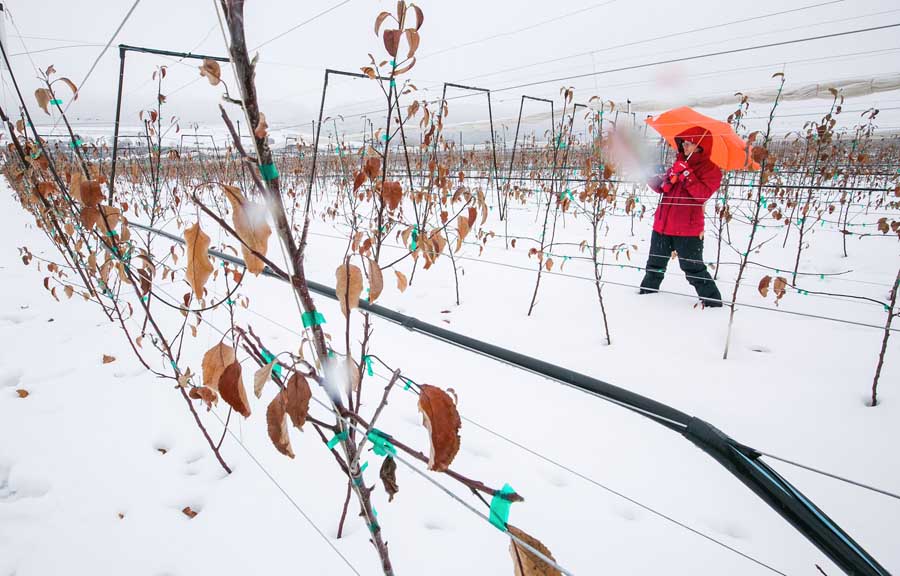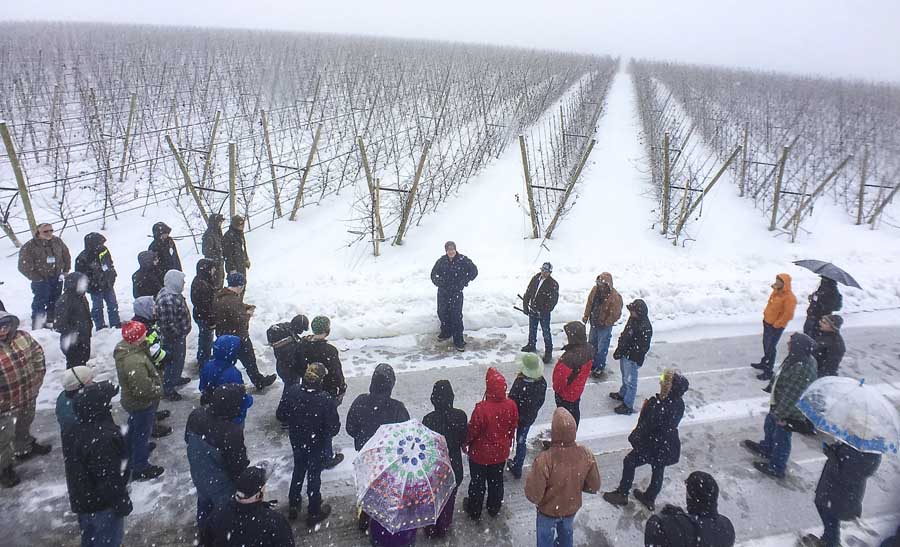The first day of orchard tours at the International Fruit Tree Association’s 60th annual conference in Washington featured a central theme: the future.
Washington is the top producer of apples in the United States, with a diversified mix of more than 30 commercial varieties grown today, on more than 20 apple rootstocks.
Growers at four stops offered insight into their efforts to better manage crop loads, prepare their orchards for automation, choose varieties to compete in the marketplace and to keep a family farm successful as the next generation takes over the operation.

Jim Divis talks about benefits of using foggers to manage sunburn instead of overhead sprinklers at his Brewster farm. (TJ Mullinax/Good Fruit Grower)
Jim Divis of Divis Orchards in Brewster, Washington, shared the results of hedging two-leader blocks of both Fuji and Honeycrisp and balancing the vigor in each leader.
“If we had a leader that was lagging behind, we would head that leader to get it to catch up in a more vigorous state,” he said. “If some branches overcropped, we would thin them down a little more.”
It doesn’t matter if the tree looks perfect, Divis said. “It’s about picking the two most vigorous, strongest two. We try to match the two leaders to the size. They need to be able to compete with each other.”
Del Feigal of Auvil Fruit Co. in Orondo, Washington, showed off the company’s latest innovation, a short, four-wire trellis with 8-foot centers — a nearly pedestrian production system of some 2,400 trees per acre. Feigal said the system is proving to be suited for workers — no ladders — and for automation in the future.
“A taller system needs more equipment, more people to manage. That’s one of the advantages of using the shorter trellis,” he said. “We also are able to get the orchard into production sooner.”

Del Feigal of Auvil Fruit Co. said he can achieve about 100 bins per acre with these Galas on custom trellises at their Orondo, Washington ranch. (TJ Mullinax/Good Fruit Grower)
McDougall & Sons in East Wenatchee, Washington is pushing hard with three apple varieties in the near future: Ambrosia, which the company holds the U.S. rights to market, the managed variety Envy and Cosmic Crisp, the new Washington State University variety being released to Washington growers this spring for planting.
The company also is looking at earlier cherry varieties, with plans to probably plant another 300-400 acres, Scott McDougall said.
With the ever-present costs of land and orchard establishment, the skyrocketing costs of labor and the new added costs to meet food safety requirements, growers keep seeing new layers added to their operating costs.
“It’s just getting so expensive to grow fruit,” he said. “We’re focusing on high-value varieties.”

With snow falling heavily, Scott McDougall talks to one of the IFTA groups visiting his Legacy Orchards ranch in the Wenatchee, Washington area on February 20, 2017. McDougall said he’s planning blocks for a future that includes automated harvesting technology. (TJ Mullinax/Good Fruit Grower)
Robison Orchards in Chelan, Washington, is taking the same step. A smaller operation, the family farms 125 acres and recognizes the value of high-value varieties for smaller growers.
“We would have to complete on efficiencies on lower value varieties, and we just can’t do that with large growers, and we can’t compete with a 100-acre block that’s flat,” he said, pointing to their sloping hills. “That’s the reality.”
Varieties planted include Honeycrisp, Jazz and Envy. The goal is to grow 75 percent or more high-value varieties, he said. “In doing that, we can stay in business.”
Robison also said the family started succession planning for their family farm four years ago and expects the process to be complete in seven years, when he takes over the farm.
Key to the process was going into it with few key goals: taking care of the older generation to ensure a comfortable retirement, maintaining good relations with siblings who are not associated with the farm at this point but may decide to get involved later, and ensuring the viability of the business.






Leave A Comment